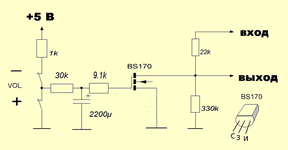neazoi
Advanced Member level 6
Hi I would like to cascade four DS1669 digital potentiometers to achieve a 256 step one. Is that possible and how?
I do not mind the final value of the composite potentiometer as this will be used as a potential divider to drive a varicap. What I do care is to increase the number of steps so as to increase the "resolution".
Maybe another chip can do it but it has to have the up/down buttons not I2C or other digital control and be easily solderable (not QFN)
I do not mind the final value of the composite potentiometer as this will be used as a potential divider to drive a varicap. What I do care is to increase the number of steps so as to increase the "resolution".
Maybe another chip can do it but it has to have the up/down buttons not I2C or other digital control and be easily solderable (not QFN)
